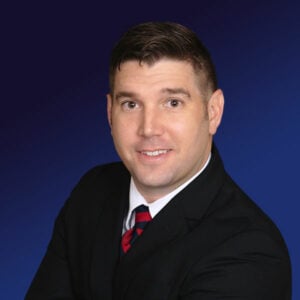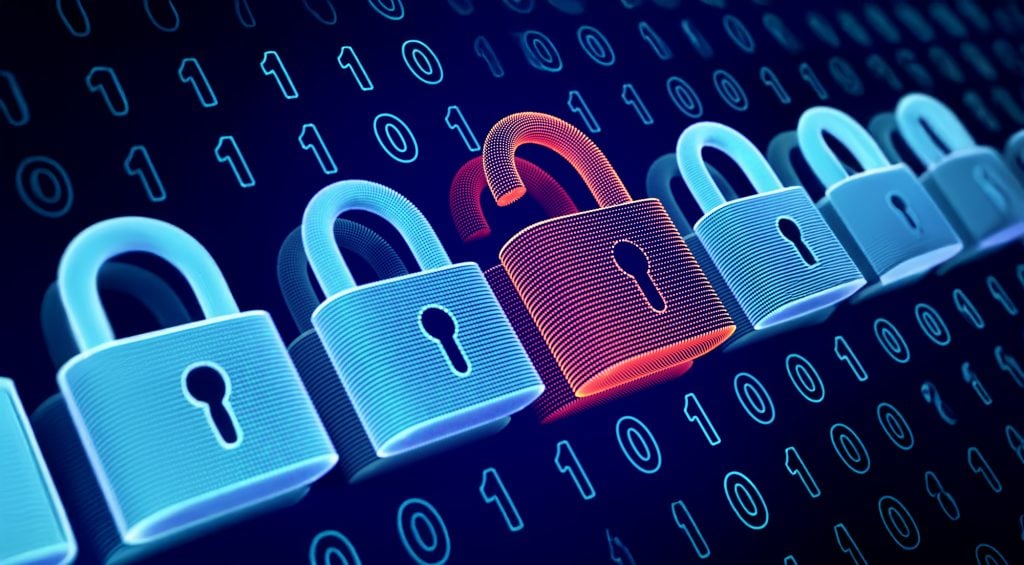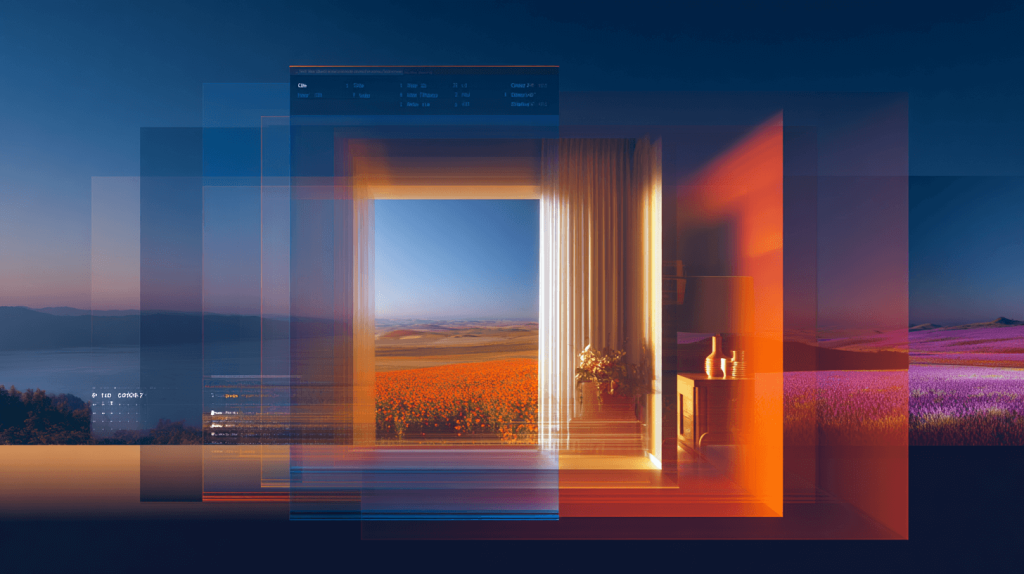As a founder, navigating the intricate maze of intellectual property can be daunting. To help you better understand how to patent software and safeguard your groundbreaking innovations, we’ve put together this step-by-step guide.
Obtaining a software patent can be a complex and challenging process, but it is essential for protecting your innovations and gaining a competitive edge in the marketplace.
There is no question that we are in the midst of a global software and AI boom. Everywhere you turn the news is discussing the latest platforms that help make your life or workplace more efficient and streamline everyday tasks. For those technology companies developing proprietary software, protecting your platform with the right legal protections can mean the difference between gaining a competitive edge or becoming obsolete in the marketplace in just a few years.
In 2023, 62.7% of all granted utility patents were classified as “software related,” signaling the growing trend of organizations harnessing the power of artificial intelligence, machine learning, and computer programs. Intellectual property created by your business is one of your most valuable assets, and patenting your software protects your inventions from competitors, illegal use, and more. Not only does a software patent prevent unauthorized use from third parties, but there are also ancillary benefits, including increased investor and shareholder confidence, increased revenue, easier venture capital funding, and more.
When seeking software patentability, it is crucial to emphasize the importance of novelty, usefulness, and providing detailed explanations of the technical improvements your software offers over existing solutions.
Gathering the right legal protections for your software platform is critical in future-proofing your business, and in this guide, we’re going to break down a step-by-step guide for startups looking to patent their software.
Introduction to Patenting Software
Patenting software is a complex process that involves understanding the intricacies of patent laws and software inventions. Software patents are a type of intellectual property (IP) protection that covers a piece of software, including computer programs, libraries, user interfaces, and algorithms. The purpose of a software patent is to protect the inventor’s rights and prevent others from making, using, or selling the patented software without permission. In the United States, the United States Patent and Trademark Office (USPTO) is responsible for granting software patents. Different patent offices, such as the USPTO, have unique regulations and requirements for software patents, making it crucial to understand these differences when seeking global protection. To obtain a software patent, inventors must file a patent application and undergo a review process to determine patentability.
Can you Patent Software?
The short answer is “Yes!” Software and software related inventions are patentable subject matter if properly claimed in your software patent application. According to the USPTO, a software process refers to an act or series of steps your software executes. Thus, the software patentability of your invention stems directly from how the patent application is drafted and how the process or method is described. Understanding the criteria for obtaining patents is crucial, as your software application must be directed to the process or method of execution of the software on a computer or mobile computing device and include all accompanying hardware or components where the software is implemented.
Determining Patentability
Determining patentability is a crucial step in the software patent application process. To be patentable, software must meet certain criteria, including novelty, non-obviousness, and technical improvements. The software invention must be new and not obvious to others in the field. Additionally, the software must provide a technical improvement over existing technology. Clearly defining the claimed invention in your patent application is essential to demonstrate its novelty and technical improvements over existing technology. A prior art search is essential in determining patentability, as it helps to identify existing patents and non-patent literature that may affect the patentability of the software invention. Patent attorneys play a vital role in determining patentability, as they can help inventors navigate the complex process and ensure that the patent application meets the necessary requirements.
Understanding Intellectual Property
Understanding intellectual property (IP) is essential for software developers and inventors. IP refers to the legal rights that result from the creation of intellectual goods, such as software. There are several types of IP protection, including patents, trademarks, copyrights, and trade secrets. Patents protect inventions, including software, and provide exclusive rights to the patent holder. Specialized knowledge in computer related inventions is crucial for navigating the complexities of software patents and securing robust intellectual property protection. Trademarks protect brand names and logos, while copyrights protect literary and artistic works. Trade secrets protect confidential information, such as software code. Software developers and inventors must understand the different types of IP protection and how they can be used to protect their software inventions.
Is it Difficult to Patent Software?
Yes, filing for patent protection is never a sure thing and each application poses its unique challenges. Software patent applications are patentable subject matter but must be drafted in a specific way to ensure you are articulating your process and describing how you are providing a technical solution in a non-obvious manner. Remember, merely performing generic or routine steps on a computer is considered abstract and not patentable subject matter.
To qualify as a patent eligible application, software must significantly evolve beyond abstract ideas by improving computer functionality or utilizing unconventional elements.
To successfully patent software, it is essential to understand both the program itself and the fundamental processes involved in its execution.
Before embarking on your software patent process, it’s critical to align your expectations around a realistic patent process and understand your timelines, costs, and expectations. You must understand with your software application that the results aren’t guaranteed and there are a number of factors such as disclosure information, attorney experience, and the USPTO examination process that all affect whether you receive a Notice of Allowance.
However, working with a law firm that has experience in drafting software applications helps ensure that your application has the best chances of success.
How To Patent Software: A Step-By-Step Guide
- 1. Prepare a Thorough Disclosure
- Outline your software’s operation, components, methods or processes of use, and desired output.
- Include relevant drawings, flowcharts, or wireframes for your patent attorney’s review.
- 2. Identify Points of Novelty
- Clearly articulate unique features, functionalities, and limitations that distinguish your software from existing technologies.
- Conduct a prior art search to assess the patentability of your invention and determine how broadly your claims can be drafted.
- Remember the importance of ongoing refinement of patent claims to maintain protection as software evolves.
- 3. Conduct a Thorough Prior Art Search
- Review existing patent publications and non-patent literature to identify prior art that could impact the patentability of your software.
- Understand that performing an effective patent search requires skill and a deep understanding of the field.
- 4. Draft a Robust Patent Application
- Collaborate with a patent attorney to draft a comprehensive non-provisional utility patent application.
- Ensure the application includes claims, specifications, and drawings that highlight your software’s points of novelty and improvements over prior art.
- 5. File the Patent Application
- Submit the completed application to the United States Patent and Trademark Office (USPTO).
- Ensure all necessary documentation and fees are included to avoid delays.
- 6. Respond to USPTO Communications
- Work with your patent attorney to address any questions or objections from the USPTO.
- Be prepared to amend claims or provide additional information as requested.
- 7. Monitor and Maintain Patent Protection
- Once granted, ensure compliance with maintenance fee schedules to keep the patent active.
- Regularly review and update your patent portfolio to protect ongoing software developments.
The Patent Application Process
The patent application process for software patents involves several critical steps, starting with the preparation and filing of a patent application with the United States Patent and Trademark Office (USPTO). This application must include a comprehensive description of the software invention, detailing its technical features and advantages. The USPTO will then review the application to determine if the software invention meets the stringent requirements for patentability, including novelty, non-obviousness, and subject matter eligibility. Given the complexity and time-consuming nature of this process, it is highly recommended that software developers work with a patent attorney. A skilled attorney can ensure that the application is meticulously prepared and filed, increasing the likelihood of a successful outcome.
Working with a Patent Attorney
Engaging a patent attorney can be a game-changer in the patent application process for software patents. A patent attorney can assist software developers in preparing and filing a robust patent application, ensuring that it adheres to the complex rules and regulations of the USPTO. They play a crucial role in drafting the application to adequately describe and claim the software invention. Additionally, a patent attorney can help respond to office actions and other communications from the USPTO, providing expert guidance to navigate any challenges that arise. Their expertise is invaluable in negotiating and settling disputes, making the entire patent application process smoother and more efficient.
Types of Patent Applications
There are several types of patent applications that software inventors can file, including utility patents, design patents, and provisional patent applications. Utility patents cover the functional aspects of software, while design patents cover the visual appearance of software. Provisional patent applications provide temporary protection for software inventions and can be used to establish a filing date in anticipation of the utility patent application filing. Non-provisional patent applications, another name for utility patent applications, are used to obtain a granted software patent and provide long-term protection for software inventions. Understanding the specific rules for patenting computer implemented inventions is crucial for developers and entrepreneurs in safeguarding their innovations. Software inventors must understand the different types of patent applications and how they can be used to protect their software inventions. Patent attorneys can provide guidance on the different types of patent applications and help inventors choose the best type of application for their software invention.
How to Respond to an Examiner Office Action Rejection in a Patent Application
After filing your non-provisional patent application, a USPTO Examiner will substantively examine it for patentability. Once the Examiner has completed their examination of your patent application, the Examiner may detail any grounds for rejection or objection in an Office Action. An Office Action can raise one or more issues regarding the patentability of your application in light of the statutory requirement for patentability or prior art of record. However, the primary focus of the examination is on the novelty and patentability of your claims in the application. While their function is often underestimated, the specification and drawings are used to support your claim set and may provide a vital role should any claim amendment be necessary for an Office Action.
The federal circuit has played a significant role in addressing ambiguities in software patent eligibility following the Supreme Court’s decision in Alice v. CLS Bank. Subsequent cases at the federal circuit level have attempted to clarify the confusion regarding what constitutes patentable software.
There are two types of Office Actions: Non-Final Office Actions and Final Office Actions. Each of these Office Actions will have one or more grounds for rejection. If you received a Non-Final Office Action, there are several strategies available while responding to the Examiner’s rejection. The first option is that you may argue that the rejection is improper (e.g., that the Examiner failed to consider all the elements of the rejected claim, or the Examiner misinterpreted the claim limitations, features within the cited art, or combination of cited references).
You may also argue that prior art references cited were published after the effective filing date of your software patent application, or that the Examiner’s reasoning was flawed. The second option is that you may amend one or more of the rejected claims and argue that the amended claims overcome the rejections and cited art. However, you must ensure there is support for your claim amendments somewhere in the specification or drawing figures as adding “new matter” is prohibited.
response to an Office Action requires detailed analysis to each claim rejection, objection, and any other issues raised by the Examiner in the Office Action. Failure to address every issue in the Office Action may result in further rejection or a Notice of Incomplete Reply from the USPTO.
Maintaining Your Software Patent Protection
Once your application is approved you will receive a Notice of Allowance and the USPTO will require an issue fee to be paid within a defined period found on the first page of your Notice of Allowance in order for your patent to be issued. After paying an issue fee, a patent grant should be published approximately four weeks later, and you should receive your patent certificate from the USPTO printing department in another 2-3 months.
Patent holders play a dual role in the realm of software patents, as they protect intellectual property and foster innovation, while also potentially hindering technological advancement due to the exclusivity granted for extended periods.
Maintaining such patents requires understanding the unique requirements and challenges involved, including paying maintenance fees and ensuring continued legal protection.
Please note with utility patents, maintenance fees must be paid every 3.5, 7.5, and 11.5 years after the invention is granted to ensure your patent does not expire.
How to Patent an Idea for a Mobile App
As with any software patent, including those for mobile apps, there is specific criteria that needs to be met to ensure your software is patentable subject matter and not considered too abstract for patentability in the United States. In addition to being patent eligible, your software related invention must also be novel and non-obvious over what is already known in the relevant art. You cannot obtain a patent on a software related invention if the software already exists anywhere in the world or if your invention has been disclosed in the public domain for over one year.
A computer program must meet specific criteria, including novelty, usefulness, and non-obviousness, to be eligible for patent protection.
Still not sure what can be patented in your mobile app. Here are a few tips to help you identify the “point of novelty” in your mobile app.
- What is your inventive concept?
- What are your software’s proprietary features?
- What unique functionality will your software platform execute?
- What technical improvement over existing technology will your software provide?
These questions will help you identify the “points of novelty” in your software by thinking about the unique functionality of your software in your mobile app and working backwards. This requires an understanding that functionality is how a combination of features work to provide the desired outcome. Recognizing the unique functionality will also help identify what specific features your mobile app employs. We’ve compiled a list of some great mobile app patent examples here.
How Much Does a Software Patent Cost?
When determining the cost of a software patent, there are several steps in the patent process to factor in. As with any patent application it’s always a good strategy to start with a prior art search to determine the patentability of your software platform. Prior art searches typically cost between $1,000-$3,000 depending on the breadth and scope of the search.
To justify the cost of a software patent, it is essential to offer innovative technical solutions that significantly improve technology or provide more efficient methods for addressing specific issues.
When you are ready to start your non-provisional patent application, the cost will directly correlate to the complexity of the software invention and the size of the law firm. A boutique firm typically charges anywhere from $8000-$15,000 for a basic application while larger firms generally start at $15,000 or more. For more complex inventions, a boutique typically charges between $10,000-$20,000 for a non-provisional patent application while a larger firm will generally start at $22,000.
Given the above estimates, the entire process for preparing and filing your application can cost between $8,000-$25,000 over several years. It is vital that you consult with a RLG attorney to understand your filing fees and timelines for your specific project. For those in a hurry, consider a Track One Prioritized Examination Request when filing your software application which will expedite the timeline for examination of your application.
How to Monetize Software Patents
One of the premiere strategies to monetize your patent is through licensing. Essentially a patent license is an agreement permitting another entity to market and sell your software patent for a defined duration. This licensing agreement not only generates immediate revenue for both parties but also ensures you ultimately retain ownership of the software innovation after the licensing agreement expires.
Understanding the software system is crucial for articulating its distinctiveness and advancements compared to existing technologies, which is vital for successfully monetizing software patents.
While your patent application is being processed, you can proclaim your invention as ‘patent pending.’ This status provides certain rights and conveys a message of claimed ownership and potential exclusivity before the patent is officially granted.
Through licensing you benefit from consistent royalties throughout the duration of the licensing agreement term and maintain ownership after the expiration of the agreement. Such licenses can also expose your software to a broader domestic and international audience leading to future exclusive and non-exclusive licensing and acquisition opportunities. For example, Qualcomm, Nokia, and many IP giants look to licensing patents as a key avenue for return on investment when they license them out both to competitors and companies in neighboring industries.
Software Inventions Patent Examples
Notable recent software patent examples are everywhere. For example, Airbnb patented its booking entry learning system that studied user behavior to determine the likelihood of a property being booked. Coinbase patented its Bitcoin instant exchange system and method, and DoorDash patented its real-time delivery system with automated vehicles.
Software innovations must be claimed in a way that highlights their execution on a computer system to be eligible for patent protection.
The criteria that determine software patent eligibility are crucial, as inventions must avoid being classified as ‘abstract ideas’ and demonstrate transformation into a patentable invention.
Can you Patent Software Algorithms?
The answer to this question is not as simple or straightforward as algorithms alone are considered abstract ideas and are not patentable subjects. However, if you can clearly articulate the process or method of employment that your algorithm enables, then your algorithm may be patentable subject matter as long as it is both novel and non-obvious. As with any software application, understanding and articulating the steps that your algorithm employs may shift it from an abstract idea to patentable if properly claimed in your application. Speak with an experienced software attorney at RLG to better understand the patentable subject matter in your software or proprietary algorithm.
Software Patent vs. Copyright
There are substantive differences between copyrights and patents. Copyrights safeguard the invention’s expression, including sequences and structuring, and are commonly obtained for the source code of the software. While not as broad of a legal protection as a patent, a copyright will ensure others cannot legally reproduce, distribute, perform, publicly display, or create derivative works from your software without your consent.
The European Patent Convention (EPC) sets unique criteria for software patents, requiring a technical contribution to the state of the art.
A patent protects the functional aspects of your computer software, including standalone programs and mobile apps, and precludes competitors from using algorithms or processes in an unauthorized manner or creating a program that similarly performs the same function, regardless of how the code is written. If you are curious as to which form of intellectual property protection is ideal for your unique software, don’t attempt to piece together this complicated legal puzzle on your own as it might be optimal to obtain both forms of protection. Our intellectual property attorneys are here to help.
Common Software Patent Myths
When you conduct a cursory search of the web for information about software patents, you will inevitably find half-truths, misconceptions, and even some bald-faced lies about the validity and value of software patents. The most common of these myths is that software cannot be patented, does not justify patenting, and that a patent can be overcome without a successful legal challenge. Each of these claims is based on false information. 35 U.S.C. 101 provides “processes, machines, manufactures and compositions of matter” as requisite for subject matter eligibility. For patenting purposes, software products may qualify as a “process.”
There is also a myth that the USPTO drags its feet when considering patent applications to protect software. That is simply not the case as over 63% of all patents granted last year were software-related. While the average pendency time for an initial USPTO action is 20 months, it is possible that the application will be examined sooner.
Additionally, many, incorrectly, assume software patents cannot be enforced or somehow have limited rights compared with other industries. A patent holder is legally empowered to enforce the rights to a patent as soon as the patent is issued. The breadth and scope of your patent rights are found in the issued claims.
Finally, there is a common misconception that it is impossible to expedite the examination of a software patent application. The USPTO provides the option of prioritized examination through a program that accepts upwards of 15,000 applications on an annual basis. Such applications are filed within the Track One Prioritized Examination that aims at providing a final disposition for your application within twelve months of filing.
Additional Resources
The Must-Have SaaS Patent Guide 2.0
For businesses looking to future-proof their business for the next decade, check out the updated and expanded version of the free #1 SaaS patent guide downloaded by thousands of tech founders. This incredibly detailed guide explains how to identify patentable features of your software and determine if legal protection will add value to your SaaS startup.
Understanding the regulations of different patent offices is crucial for securing global protection for your software innovations.
Software technology intersects with both innovation and legal challenges in the tech industry, as software patents can hinder development by imposing strict legal frameworks that may discourage innovation and restrict competition.
The Startup Legal Stack
If you feel completely lost and overburdened by a plethora of legal questions, the Startup Legal Stack might be the answer you’ve been looking for. It’s a comprehensive collection of the best startup resources to create a strong legal foundation, including, The Must-Have SaaS Patent Guide 2.0, The SaaS Legal Forms Checklist, The Must-Have Software Patent Guide, and The App Privacy Policy Template.
Specialized knowledge in computer related inventions is crucial for navigating the complexities of software patents and securing robust intellectual property protection.
Trade secret protection is beneficial for software developers as it allows them to keep their code and algorithms confidential without needing public disclosure. This method provides a competitive edge, although it comes with limitations, such as vulnerability to independent discovery or reverse engineering.
Building a Patent Moat: Secure Your SaaS IP and Outpace the Competition
Feeling a little more confident and ready to secure a serious competitive advantage for your business? A patent moat is a strong and defensive portfolio of patents that protect your business and allow you to hold market dominance, and that’s exactly what we cover in this valuable training. Providing innovative technical solutions in software patent applications is crucial, as such inventions must offer novel features and functionalities that improve machine performance or address specific technological issues. The free on-demand webinar, Building a Patent Moat: Secure Your SaaS IP & Outpace the Competition, teaches you how to tap into the exclusionary power of patent rights and develop a “patent moat” around your startup.
The RLG Guarantee
Software patents are invaluable assets that will bring your company strategic value. They will not only protect your proprietary software from infringement, increase the valuation of your company, provide a competitive advantage in the marketplace, but will provide both short- and long-term monetization strategies. Patent rights offer legal protection and a competitive advantage, ensuring your innovations are safeguarded against unauthorized use. Obtaining a software patent can be a complex and challenging process, but it is essential for protecting your innovations and gaining a competitive edge in the marketplace. The Rapacke Law Group is a fixed fee (no billable hour) patent and intellectual property firm designed for software and technology companies looking to protect their most valuable intellectual property assets. Our firm provides one transparent fixed fee for all patent and trademark matters without the hassle of surprise costs or nickel-and-dime billing used by traditional law firms.
In addition to a fixed-fee billing structure, the Rapacke Law Group offers a money-back guarantee on all prior art search, trademark application, and design patent applications. What that means is, should your search indicate your software invention is not patentable, a full refund will be provided. If patentable, we will credit the cost of your search towards your new application. Our trademark and design patent application packages include all search, preparation, office action, USPTO correspondence and filing fees. If your application does not receive a notice of allowance for any reason, we will provide a full refund. When you’re ready to take the next step, schedule a free consultation.




